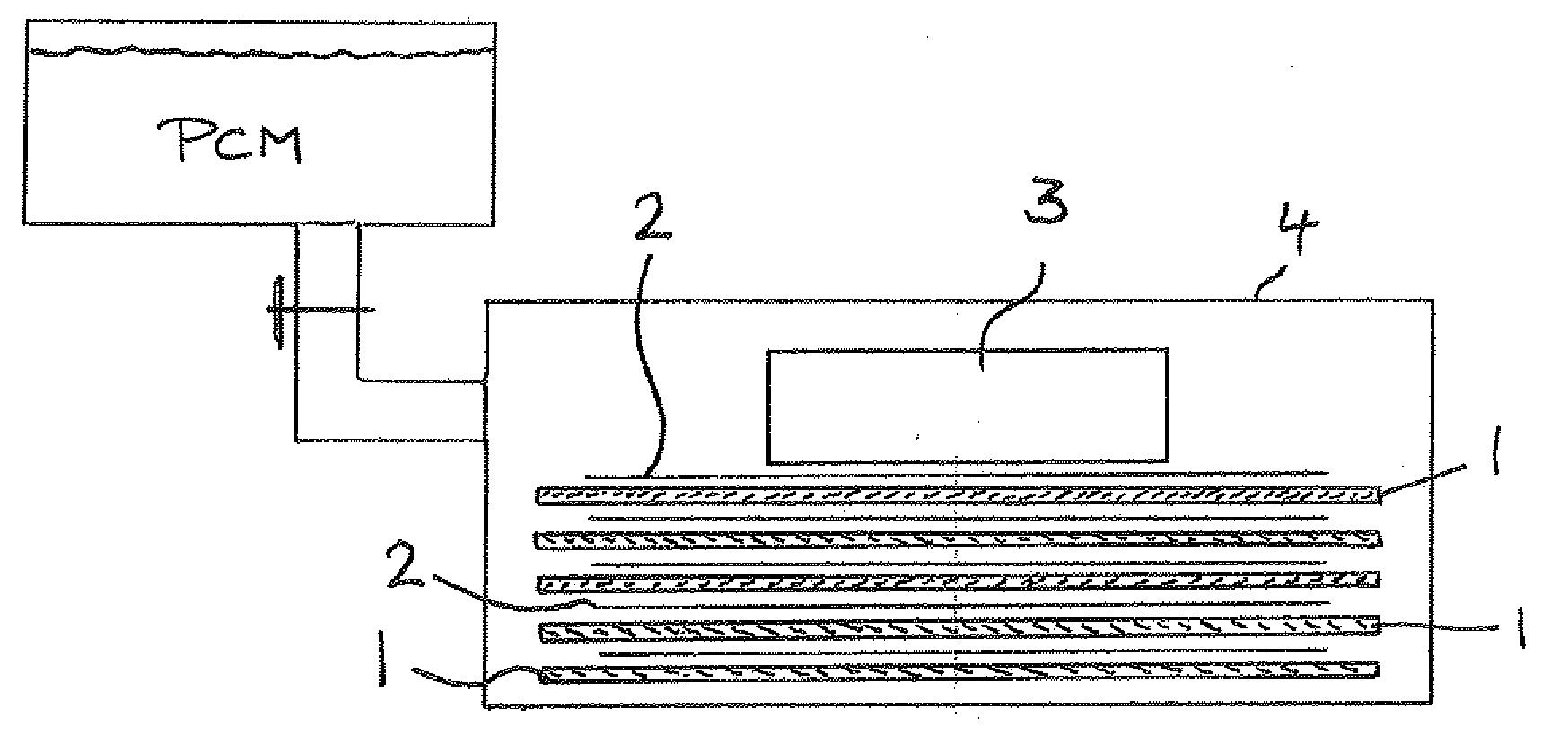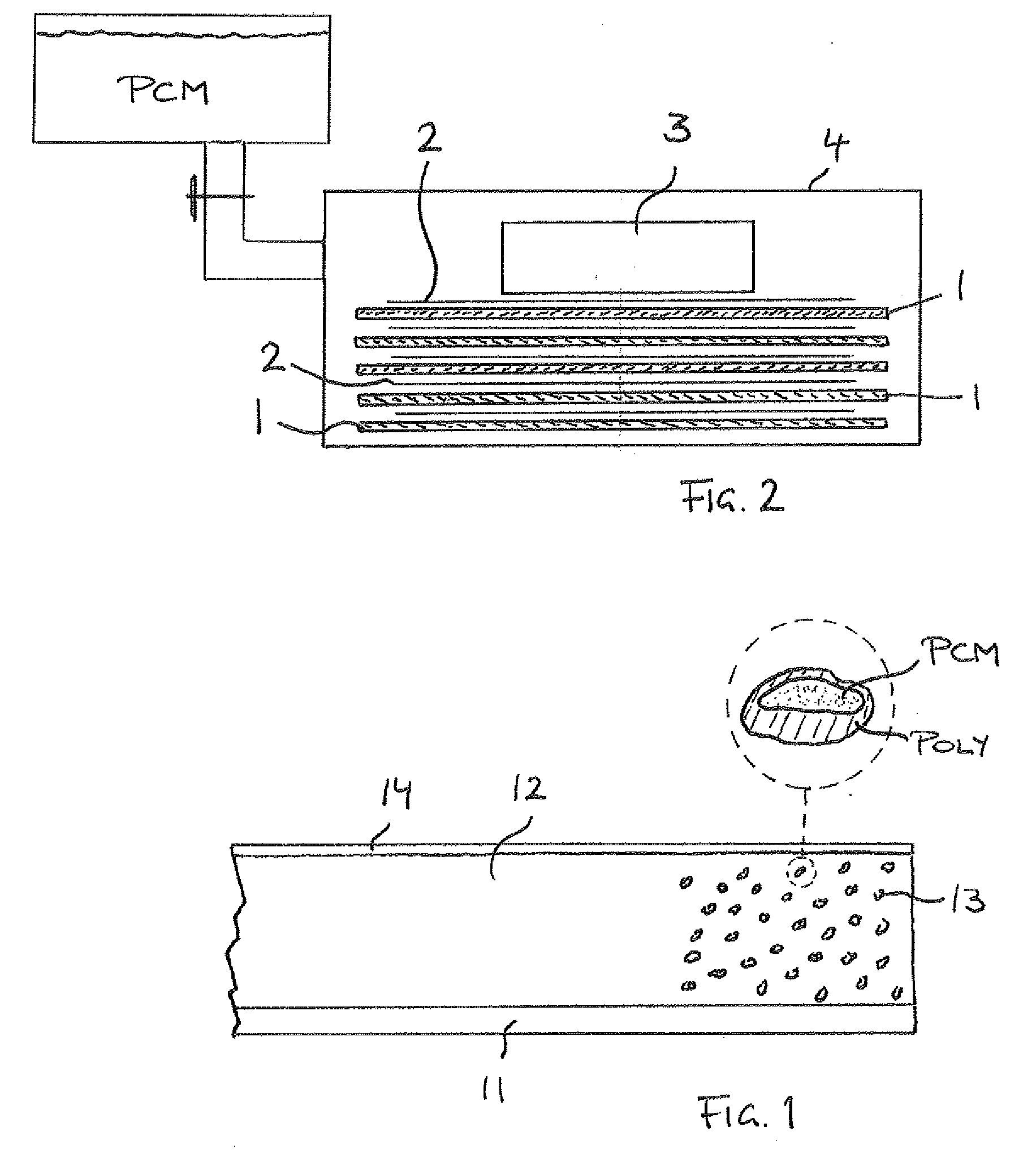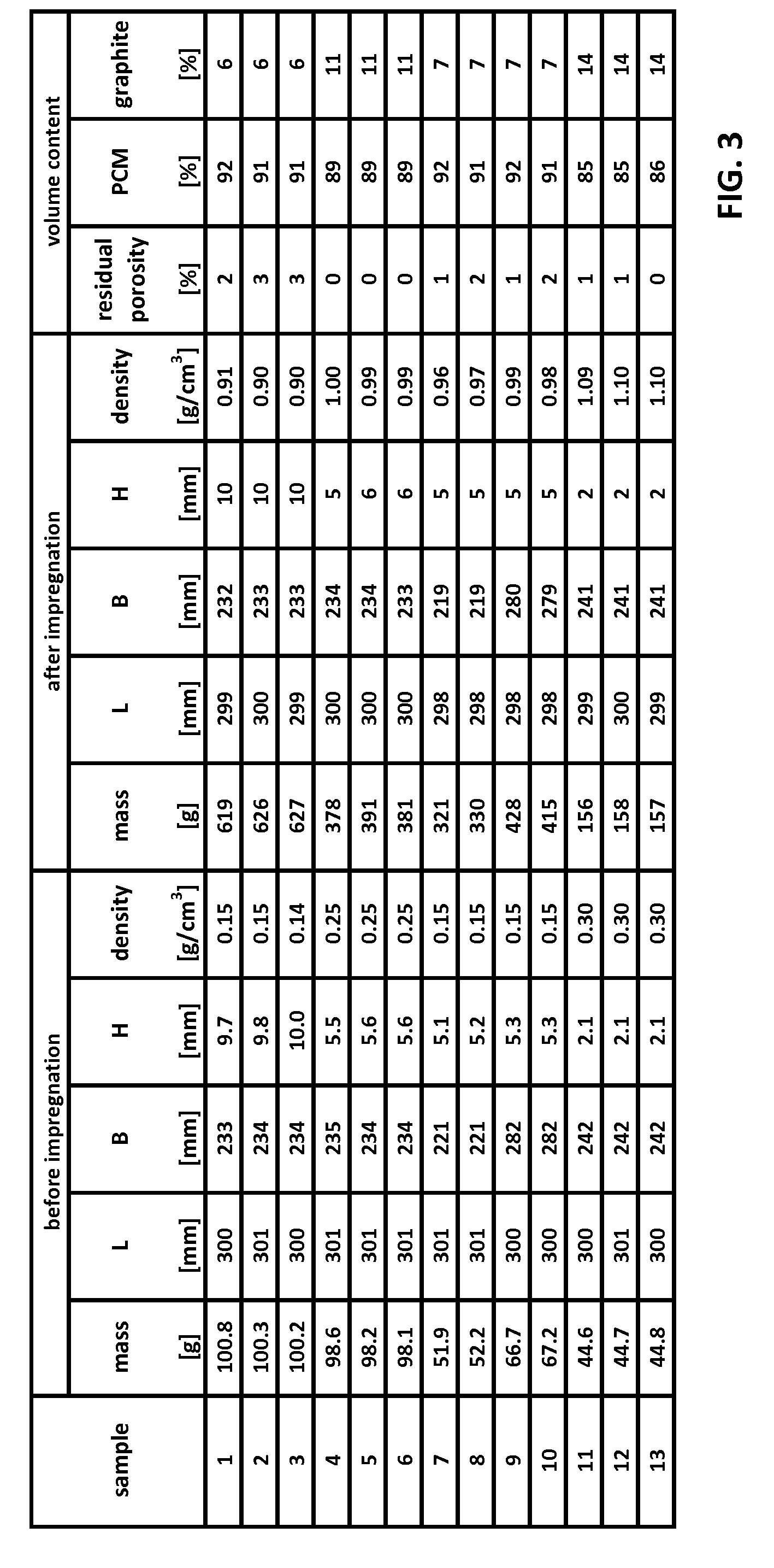Latent heat storage device with phase change material and graphite matrix
a heat storage device and phase change technology, applied in lighting and heating apparatus, charge manipulation, furniture, etc., can solve the problems of difficult to conduct heat into the pcm, pcm is not structurally rigid, and the space in the application is typically very limited
- Summary
- Abstract
- Description
- Claims
- Application Information
AI Technical Summary
Benefits of technology
Problems solved by technology
Method used
Image
Examples
production examples
Example 1
PCM on Copper
[0041]4 g of a 5% PVDF solution (vinylidene fluoride polymer) were mixed with 2.3 g of a mixture of Micronal® (PCM, melting temperature ˜25° C., BASF, Germany) and highly expanded graphite (GFG 5) at a ratio of 75% by weight to 25% by weight were mixed together with N-methyl-2-pyrrolidone (2.5 NMP, solvent). The stirring time for the solution was about 1 hour. The mixed solution was coated onto a Cu foil (0.1 mm thick) by means of a doctor blade, the coating thickness being about 250 μm. The coating was subsequently dried at 60° C.
[0042]Then, a high-density graphite foil was glued onto the coating, in order to thereby achieve the high thermal conductivity required of such devices. The thickness of the graphite foil was approx. 0.5 mm and its density was 18 g / cm3 (type L05518Z, SGL Carbon SE). The glue application onto the coating was effected by way of spray adhesive.
example 2
PCM on / in Graphite:
[0043]First we produced a Tylose solution. Distilled water was introduced into a beaker, and 0.75% Tylose MHB 3000 was slowly interspersed with constant stirring. After a stirring time of about 30 minutes, the mixture was left to stand and swell. A batch of a polyvinyl alcohol (PVA) solution was then produced. To this end, distilled water was heated to about 80-90° C., and then 0.75% Mowiol 588 (PVA) was introduced with constant stirring in a laboratory mixer. After a stirring time of about 30 min, all of the PVA granules had dissolved.
[0044]In a next step, the carrier solution was produced from 0.75% Tylose solution and 0.75% PVA solution by mixing. The mixing ratio of the two solutions in this case was 1:1.
[0045]A phase change material proportion was then introduced into the carrier solution. We once more used Micronal® (Tm=25° C.), here in a ratio 1.75:1 (carrier solution to Micronal®). The phase change material was introduced into the solution with the aid of ...
example 3
Impregnated Graphite
[0050]Here, we were concerned with infiltration properties of certain materials. The development was not limited to the extremely thin dimensions of 1 mm, but blanks and the resultant product assemblies were allowed to have thicknesses between 2 and 10 mm. The base system was formed with substrate blanks with high absorption capacity for infiltration with phase change material (PCM) and proper adhesion of a high-density graphite cover foil.
[0051]The high-density cover foil may also be provided on both planar surfaces and, indeed, it may be used to encase or encapsulate the entire sandwich structure. The graphite plate or graphite sheet can thereby be formed with very large scale perforations in which the PCM may be infiltrated. In its liquid phase, the phase change material cannot escape from the porous graphite substrate because of the protection afforded by the cover foil.
[0052]A variety of different graphite substrates were used for the production of the vari...
PUM
| Property | Measurement | Unit |
|---|---|---|
| temperature | aaaaa | aaaaa |
| temperature | aaaaa | aaaaa |
| thickness | aaaaa | aaaaa |
Abstract
Description
Claims
Application Information
 Login to View More
Login to View More - R&D
- Intellectual Property
- Life Sciences
- Materials
- Tech Scout
- Unparalleled Data Quality
- Higher Quality Content
- 60% Fewer Hallucinations
Browse by: Latest US Patents, China's latest patents, Technical Efficacy Thesaurus, Application Domain, Technology Topic, Popular Technical Reports.
© 2025 PatSnap. All rights reserved.Legal|Privacy policy|Modern Slavery Act Transparency Statement|Sitemap|About US| Contact US: help@patsnap.com



